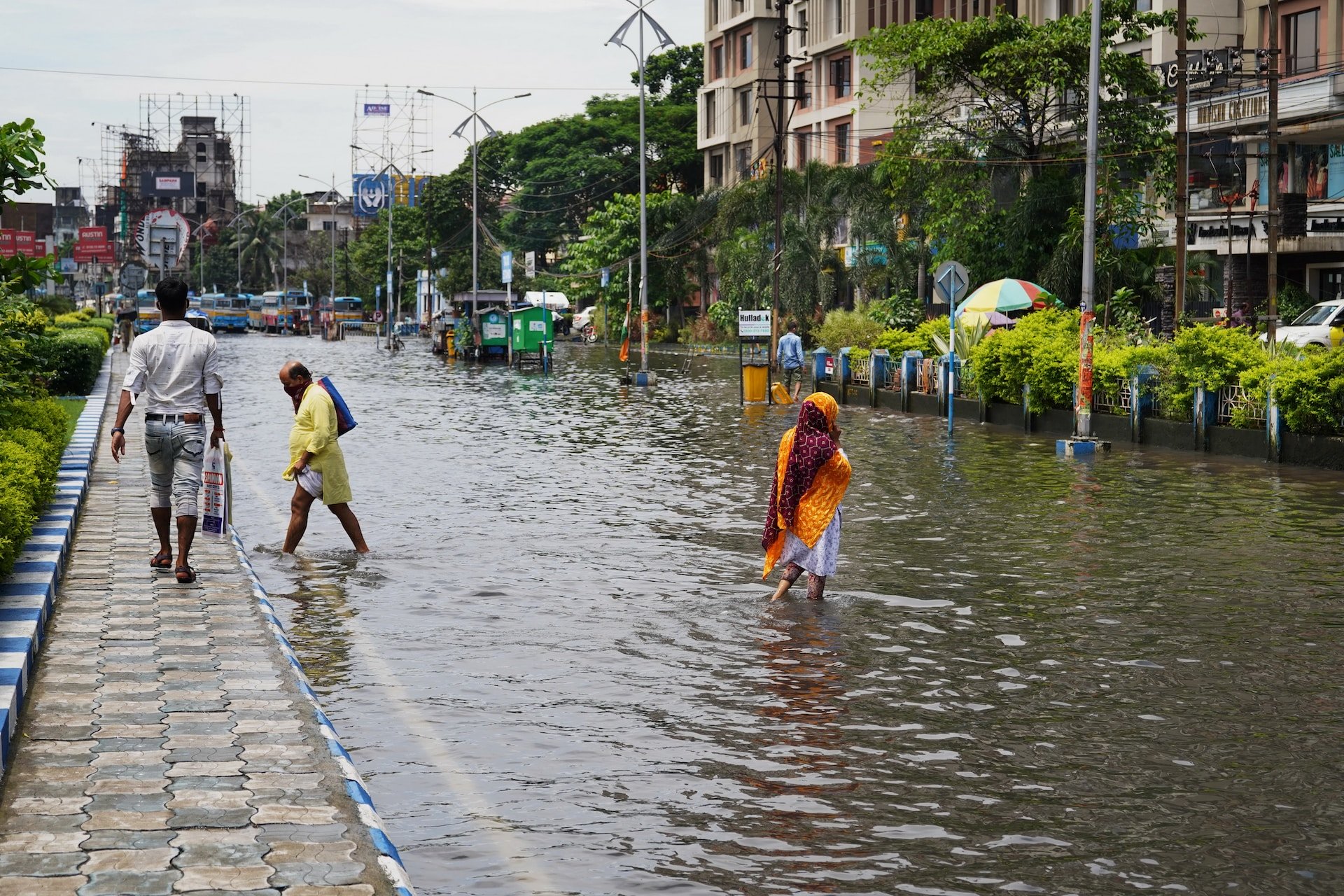THIS World Oceans Day, we take a look at Earth’s rising sea levels which has emerged as one of the most significant environmental challenges of our time. Rising sea levels are driven by a combination of factors, including climate change and human activities. These rising sea levels pose a grave threat to coastal regions worldwide, including India. This article delves into the causes and consequences of the sea level increasing and highlights the specific impacts on India.
OUR oceans are the lifeblood of our planet. They cover over 70% of the Earth’s surface and play a vital role in regulating the climate, producing oxygen and supporting an astonishing array of marine life. They are a source of food, livelihoods and endless inspiration for countless communities worldwide.
The threat of rising sea levels poses a significant challenge to India, a country with a vast coastline spanning over 7,500 kilometres. As climate change continues to drive sea levels higher, India faces a range of consequences that demand attention and action. Environmental NGOs and other nonprofits that work towards disaster relief and poverty alleviation can play a significant role in combating the consequences of climate change and sea level rise.
Causes of rising sea levels
The primary driver of rising sea levels is climate change, resulting from the increasing concentration of greenhouse gases in the atmosphere. The burning of fossil fuels and deforestation contribute to the release of carbon dioxide. This intensifies the greenhouse effect and leads to global warming. As temperatures rise, glaciers and ice caps melt and this increases the volume of water in the oceans. Warmer temperatures cause seawater to expand, known as thermal expansion. This expansion contributes significantly to the overall rise in sea levels.
Consequences of rising sea levels
Coastal Erosion: Rising sea levels exacerbate coastal erosion, leading to the loss of land, including valuable agricultural areas and coastal communities. It is estimated that India could lose about 1,500 square kilometers of land by 2050 due to erosion caused by rising seas.
Increased Flooding: Low-lying coastal areas and river deltas in India are highly vulnerable to increased flooding as sea levels rise. Coastal cities such as Mumbai, Kolkata and Chennai face a heightened risk of more frequent and severe floods. This can impact millions of people and infrastructure.
Displacement and Migration: Rising sea levels force coastal communities to face the threat of displacement and migration. People living in vulnerable coastal areas, including fishing communities and marginalised populations, are at risk of losing their homes and livelihoods. This can further lead to social, economic and humanitarian challenges.
Saline Intrusion: As sea levels rise, saline water can intrude into freshwater sources, including rivers and groundwater aquifers. This intrusion compromises the quality and availability of freshwater resources. It can impact agriculture, drinking water supplies, and ecosystems.
Threat to Infrastructure: Major infrastructure including ports, airports, power plants and roads that are located along India’s coastlines are at risk due to rising sea levels. Infrastructure damage or disruption can result in economic losses, hinder development and affect coastal industries such as tourism and shipping.
Ecological Impact: India’s coastal ecosystems such as mangroves, coral reefs and estuaries, provide critical habitats for diverse marine species. Rising sea levels threaten these ecosystems. This leads to the loss of biodiversity, fishery declines and disruptions in the natural balance of coastal ecosystems.
Water Security and Food Production: Rising sea levels can impact agriculture and food security in coastal regions. Increased salinity and flooding can degrade agricultural land, affecting crop yields and the availability of freshwater for irrigation. This compromises food production and livelihoods.
Biodiversity Threats: India’s coastal ecosystems support rich biodiversity and provide numerous ecosystem services. Rising sea levels and increased coastal erosion pose a severe threat to these ecosystems. This leads to the loss of habitat, declining fish stocks and a disruption of marine ecosystems.
Addressing the threats
Adaptation Measures: India needs to invest in adaptive measures such as coastal protection, sea walls, and afforestation of coastal areas to mitigate erosion and flooding risks. These measures should be integrated with regional planning and infrastructure development.
Climate Change Mitigation: Reducing greenhouse gas emissions and addressing climate change at a global level is crucial to mitigating the long-term impacts of rising sea levels. India can continue to promote renewable energy sources, increase energy efficiency and adopt sustainable practices across various sectors.
Integrated Coastal Zone Management: Implementing integrated coastal zone management plans can help balance development with conservation, considering the ecological sensitivity of coastal areas. This approach involves stakeholder engagement, monitoring of coastal processes and sustainable land-use practices.
Community Engagement and Resilience: Empowering coastal communities with knowledge, resources and sustainable livelihood options can enhance their resilience to rising sea levels. Local communities should be involved in decision-making processes, disaster preparedness and adaptation strategies.
International Cooperation: Addressing the threat of rising sea levels requires global cooperation. India can actively engage in international forums such as the United Nations Framework Convention on Climate Change. India can thereby advocate for shared responsibilities and support in implementing adaptation and mitigation strategies.
The threat of rising sea levels is a pressing issue for India. To effectively tackle this challenge, a multi-faceted approach encompassing adaptation measures, climate change mitigation, community engagement and international cooperation is necessary. By taking proactive steps and investing in sustainable development, India can minimise the risks to some extent and the role of NGOs will be pivotal in bringing about impactful change. To support environmental NGOs on Give.do, you can donate here.
–
Give’s mission is to “make giving bigger and better.” Give is the most trusted donation platform in India for fundraisers and crowdfunding campaigns. Through our technology solutions, we enable individuals and organisations to fundraise and donate to a cause, charity or NGO with trust and convenience. Give’s community of 2.7M+ individual donors and 300+ organisations supports 3,000+ verified nonprofits with 80G deduction and serves 15M+ people across India. Find a fundraiser today!

Choosing to tread the proverbial road less travelled, Ramon embarked upon a career in journalism and spent over 8 years working for various media organisations. A deeper calling to create a sustainable impact in the lives of the less fortunate compelled him to join the social sector. Ramon is a minimalist at heart and an explorer in spirit.


Leave a Reply